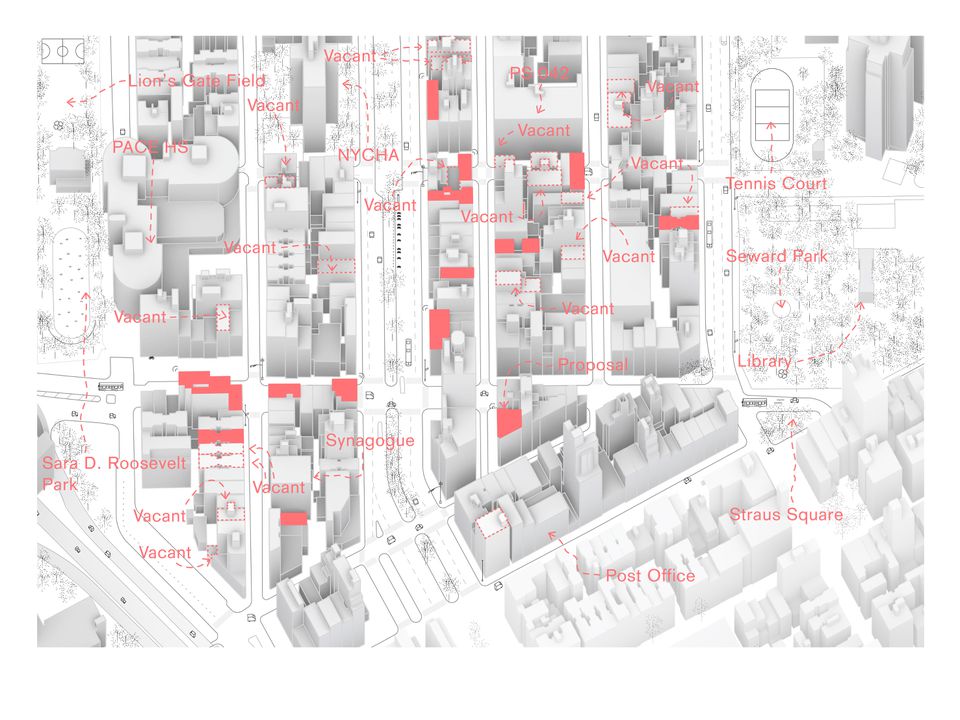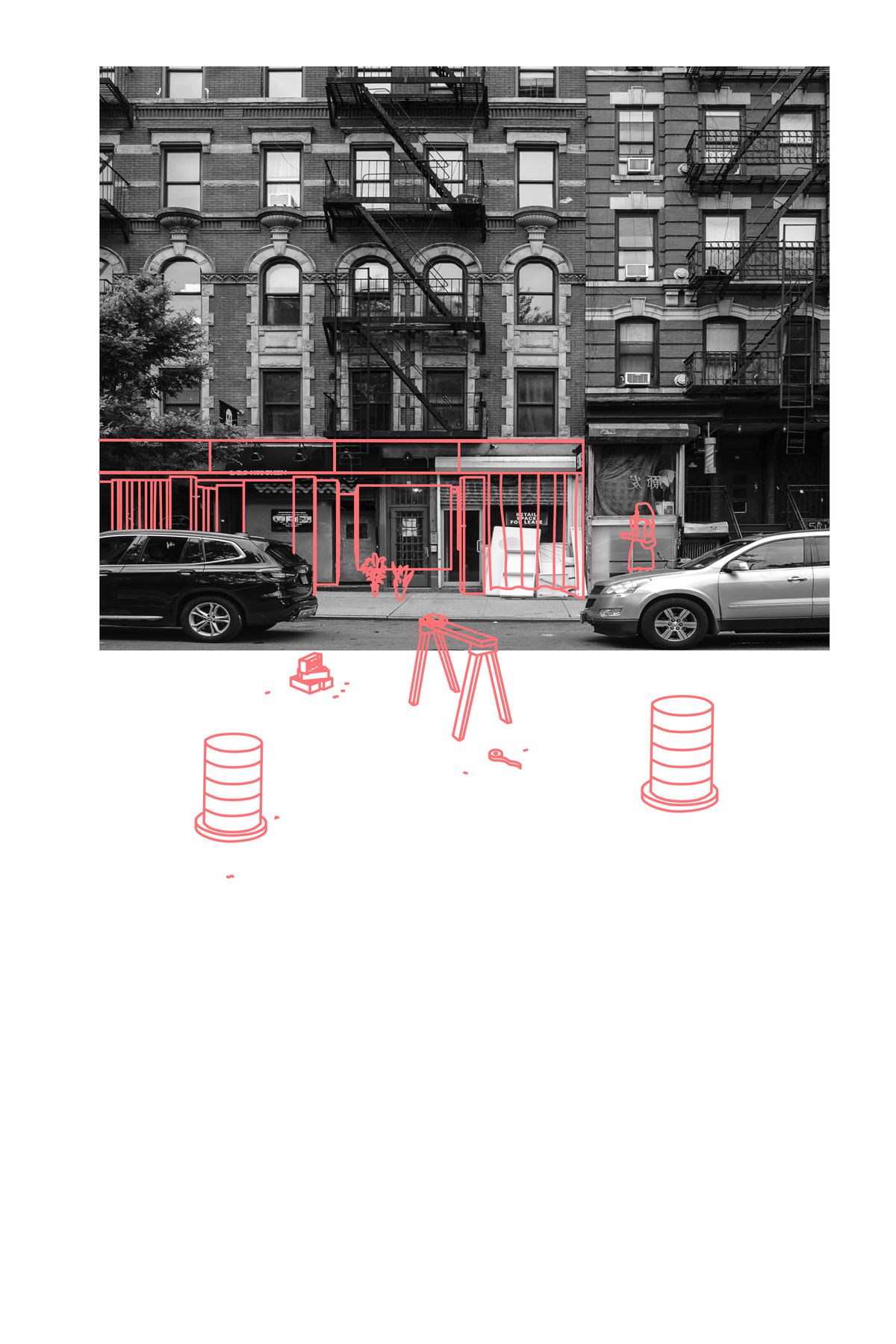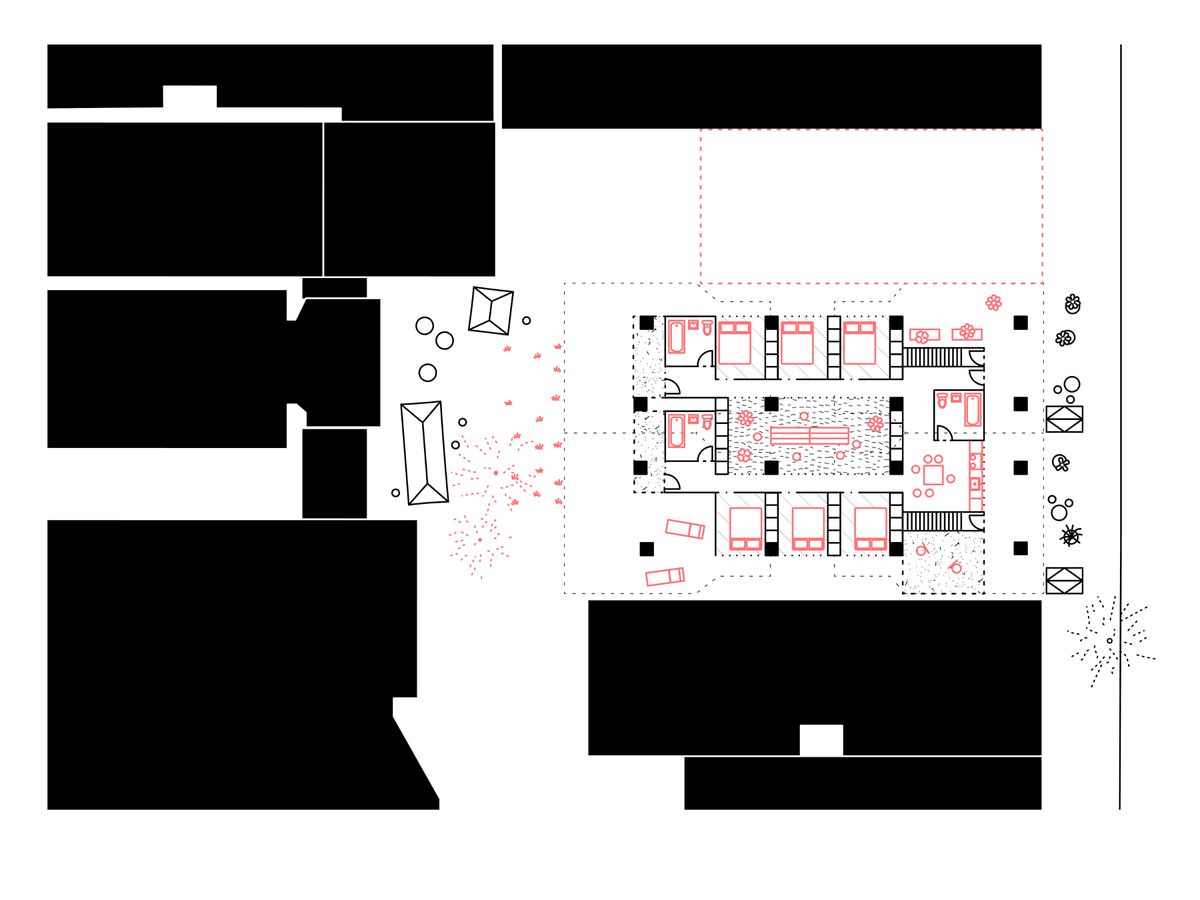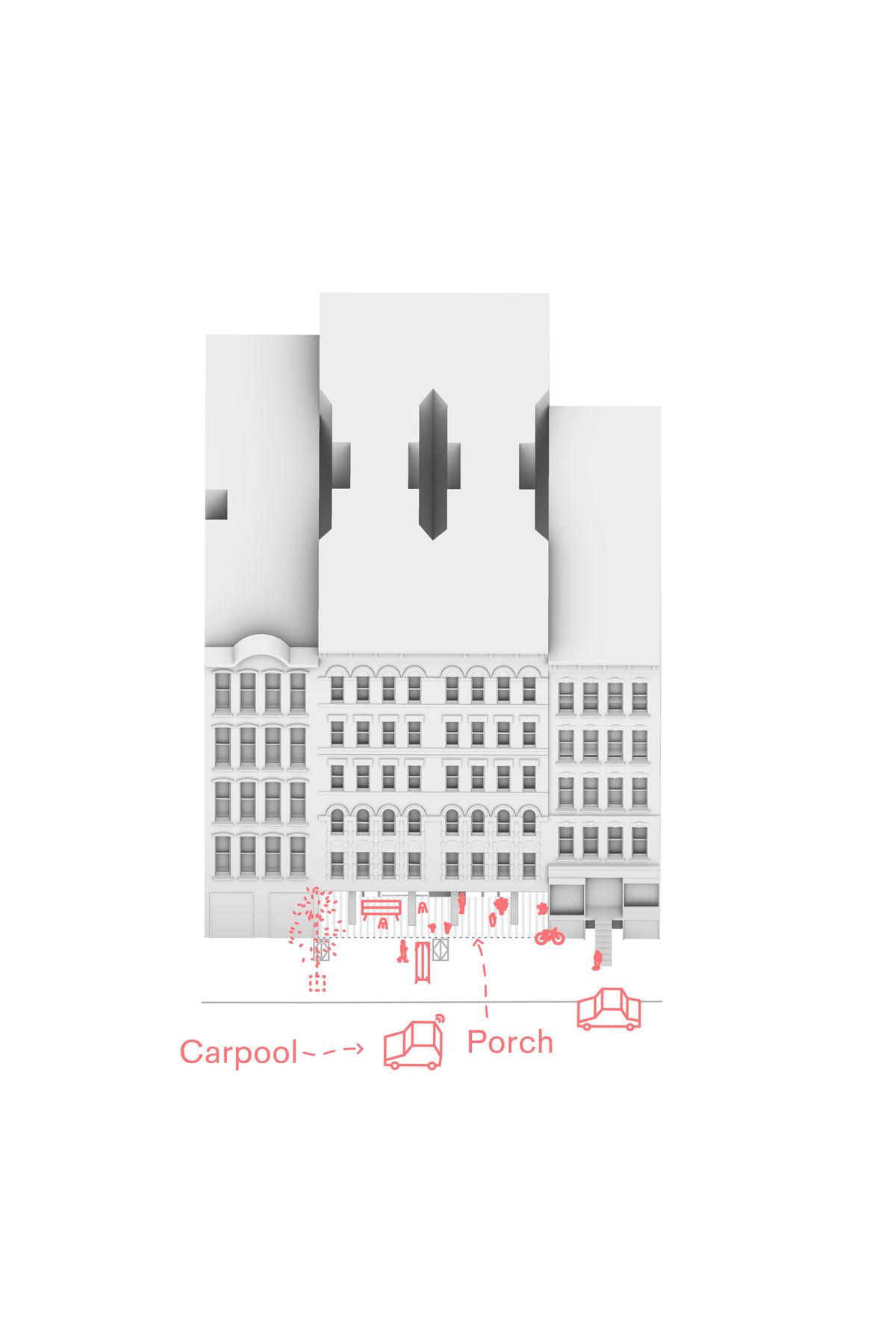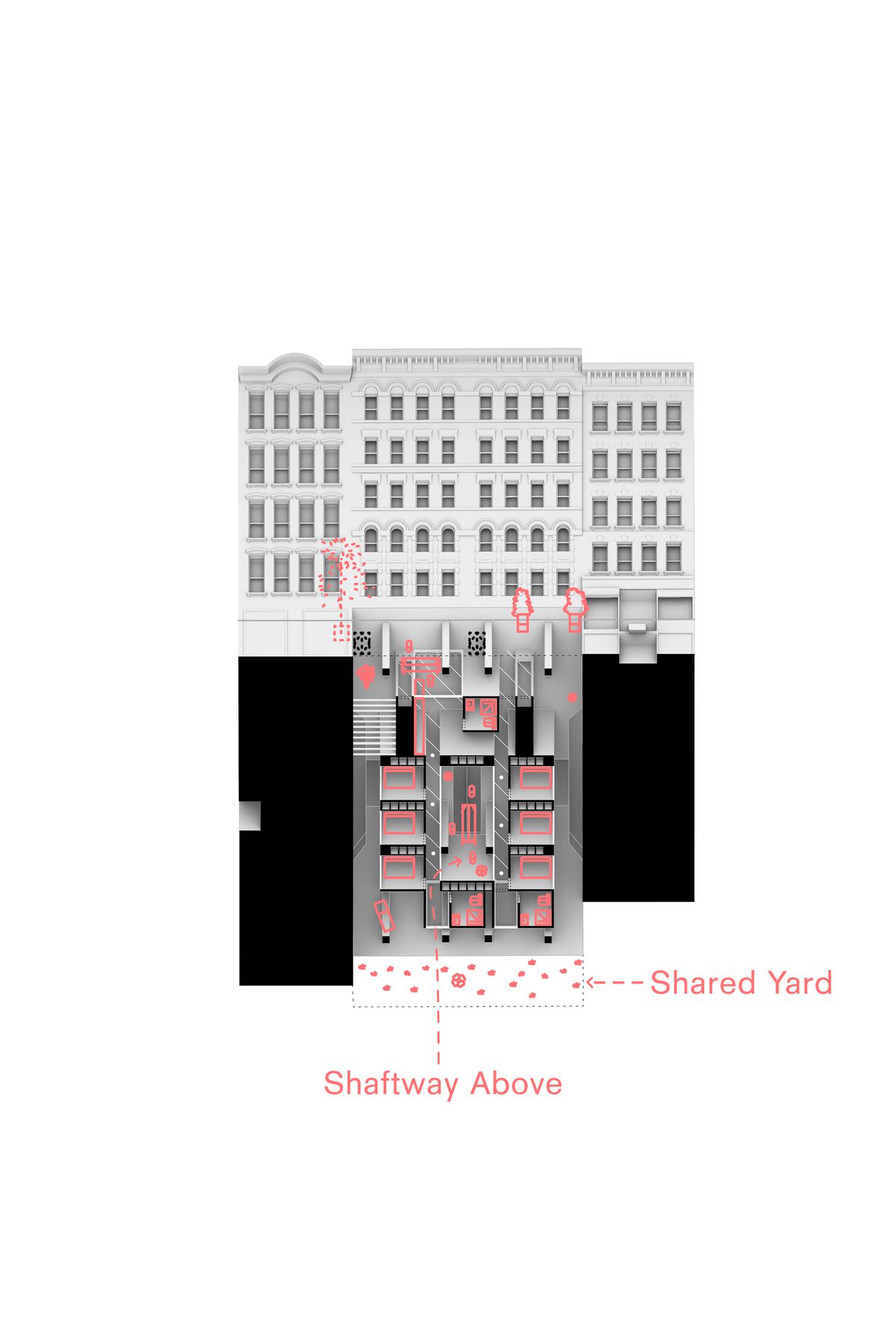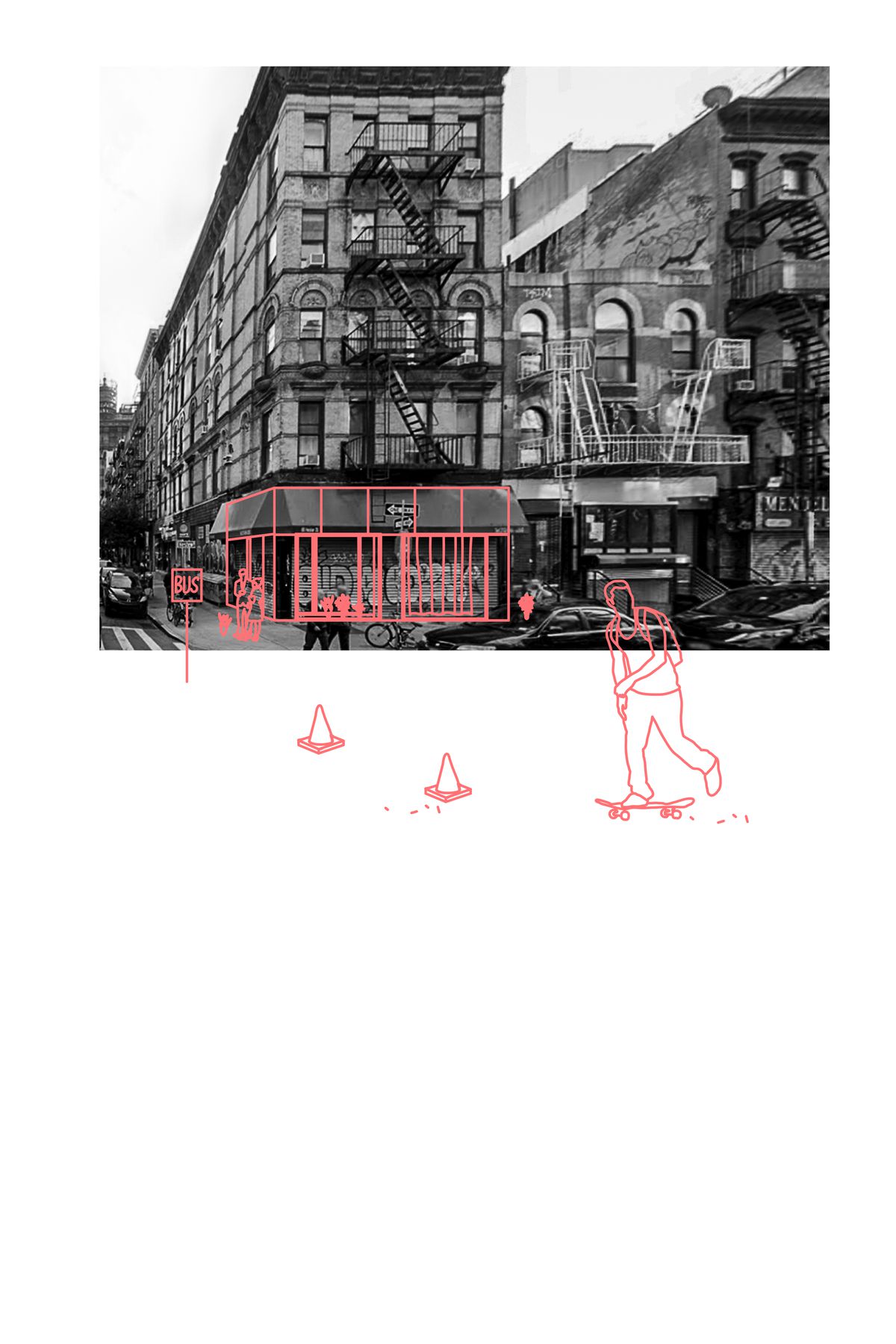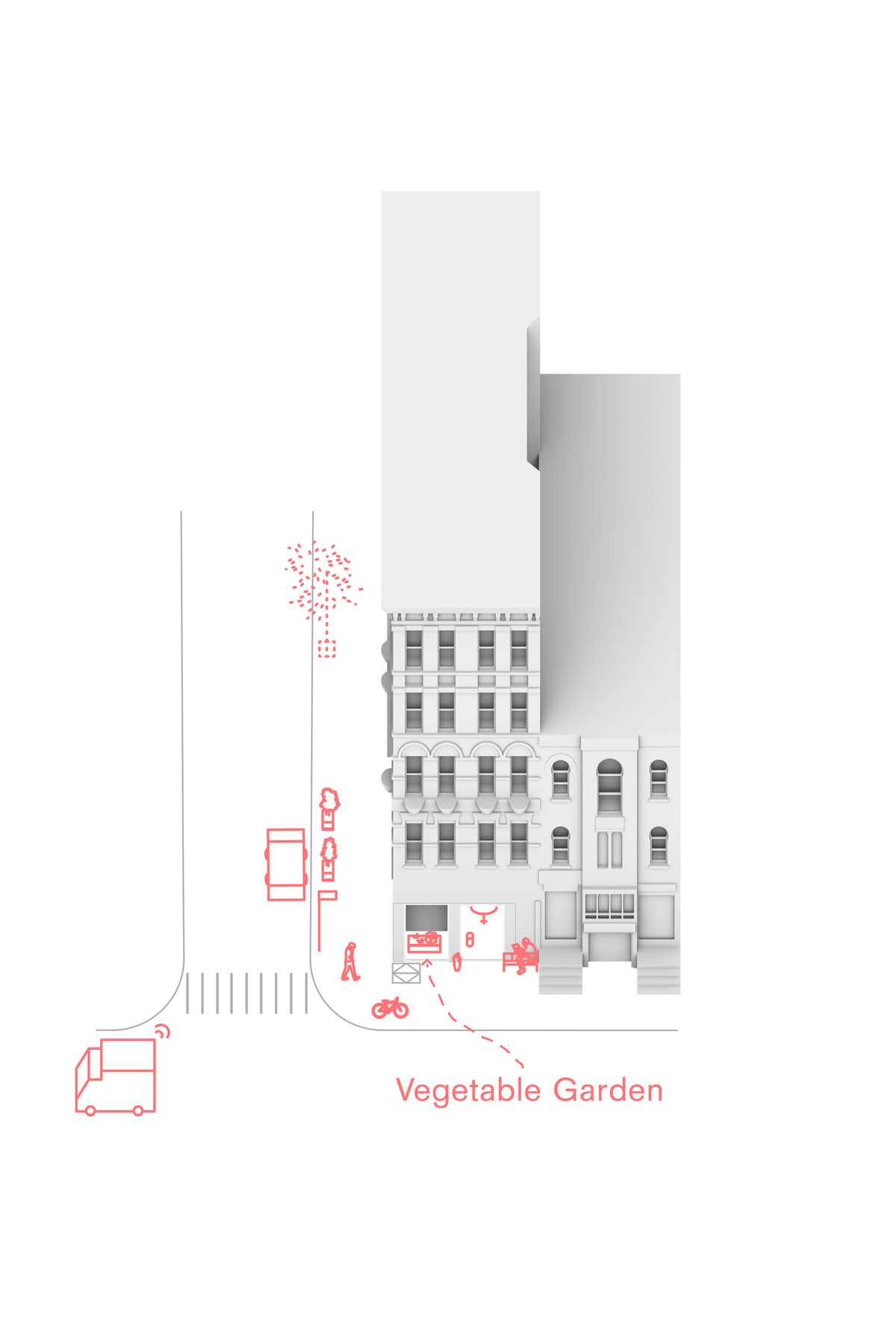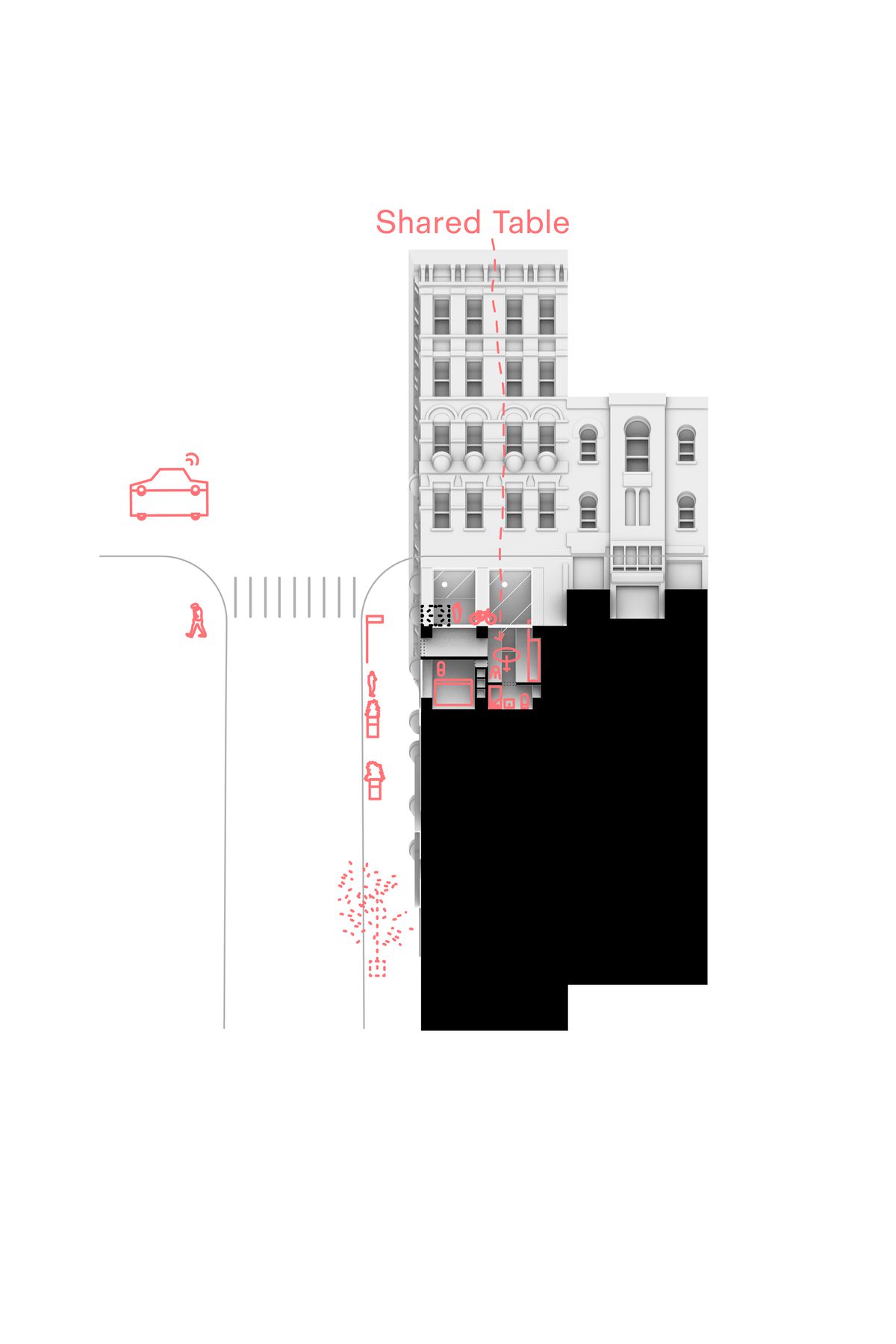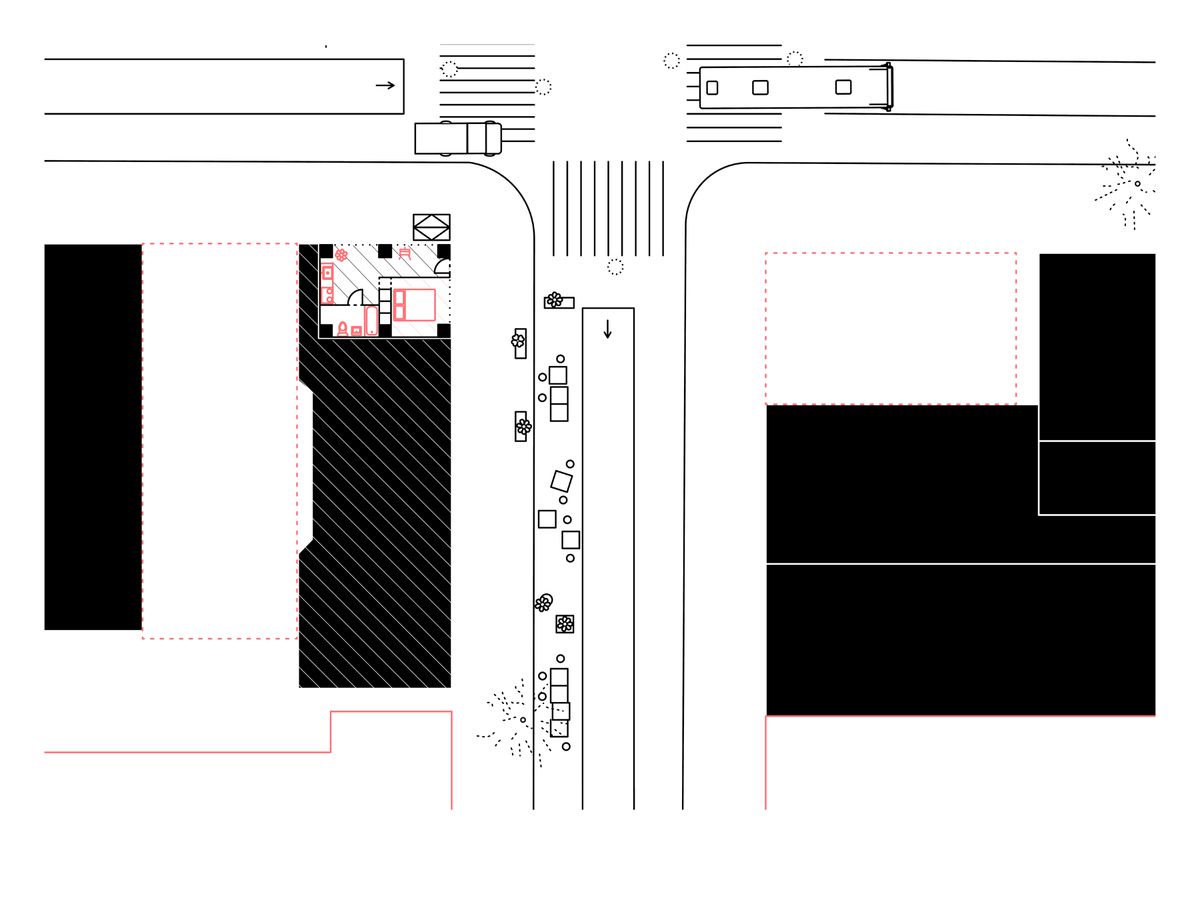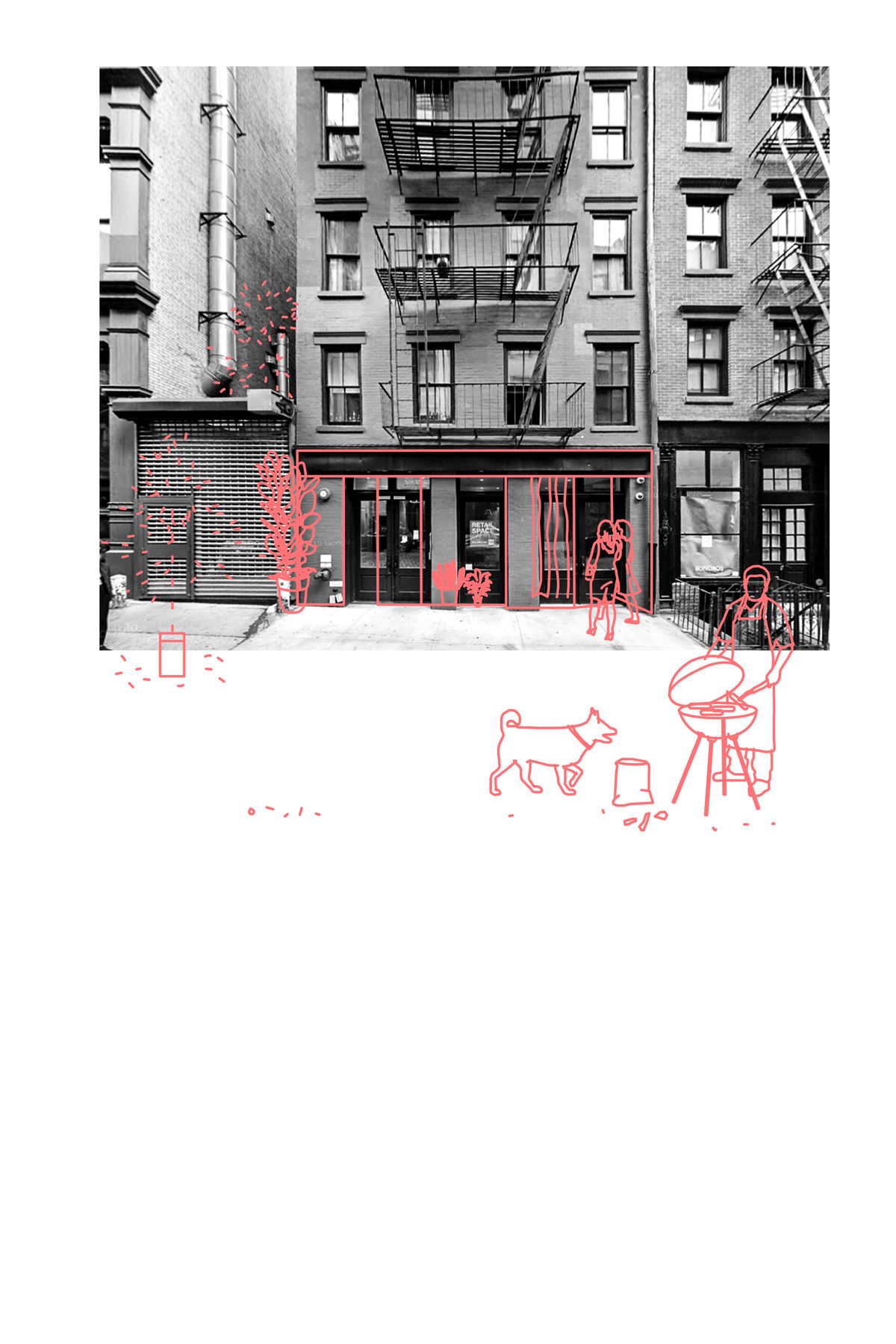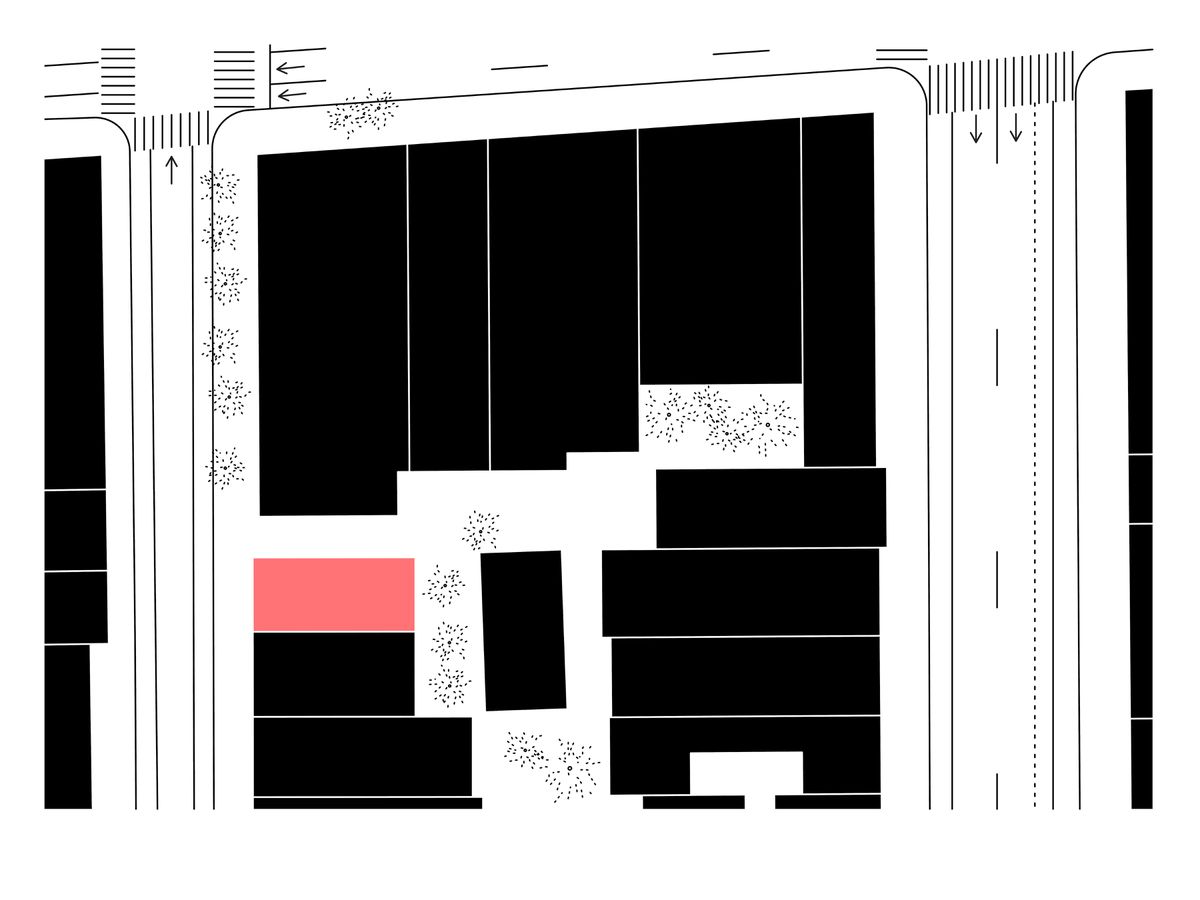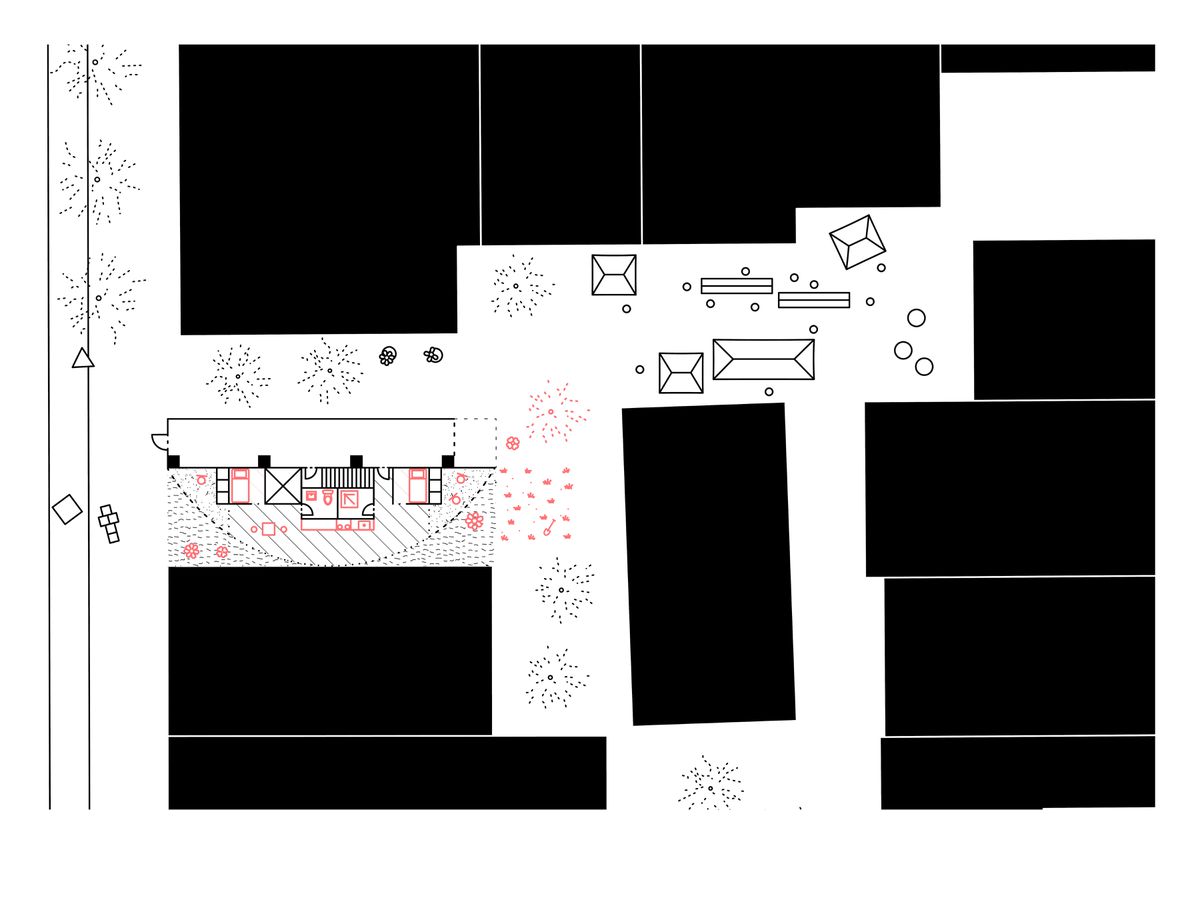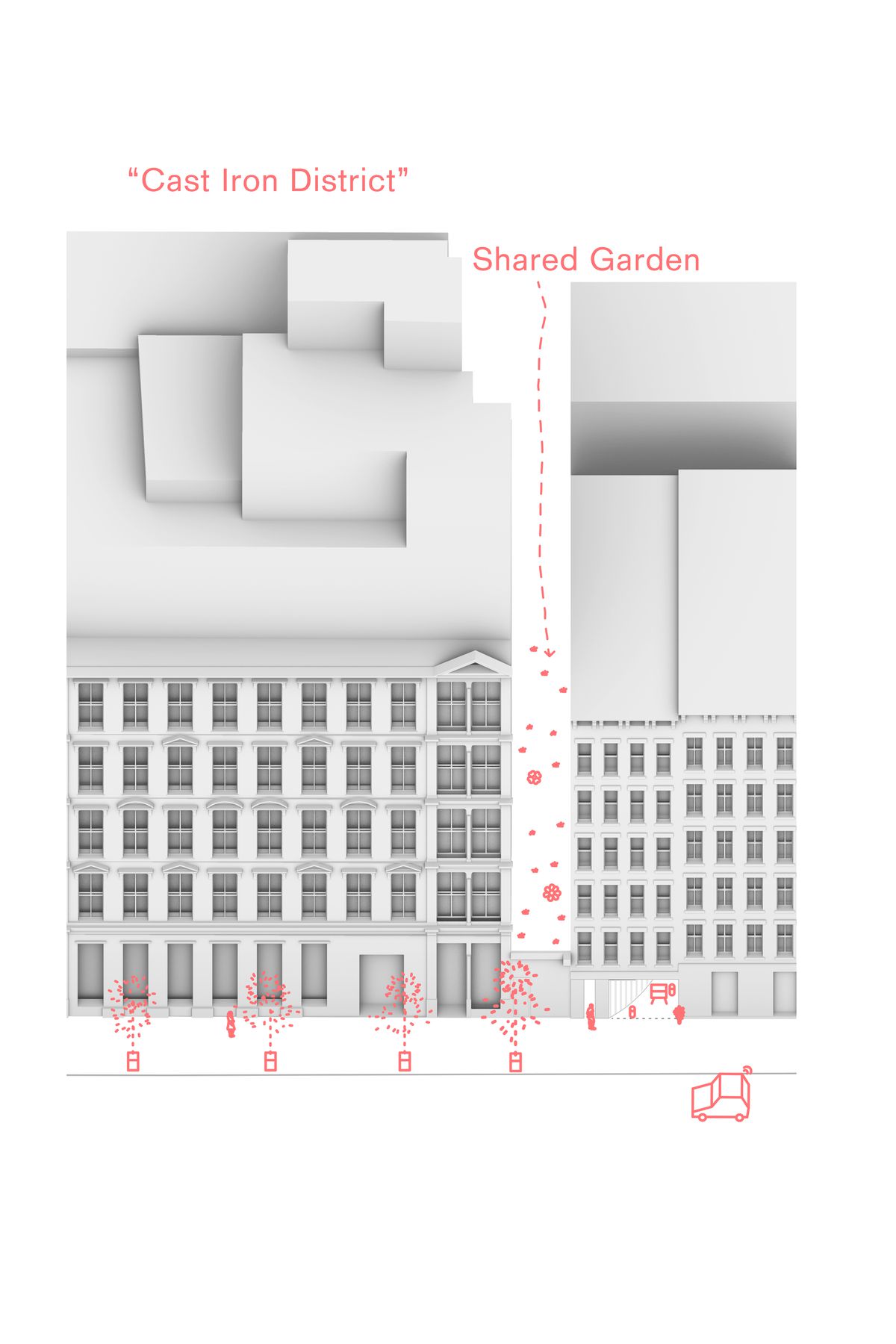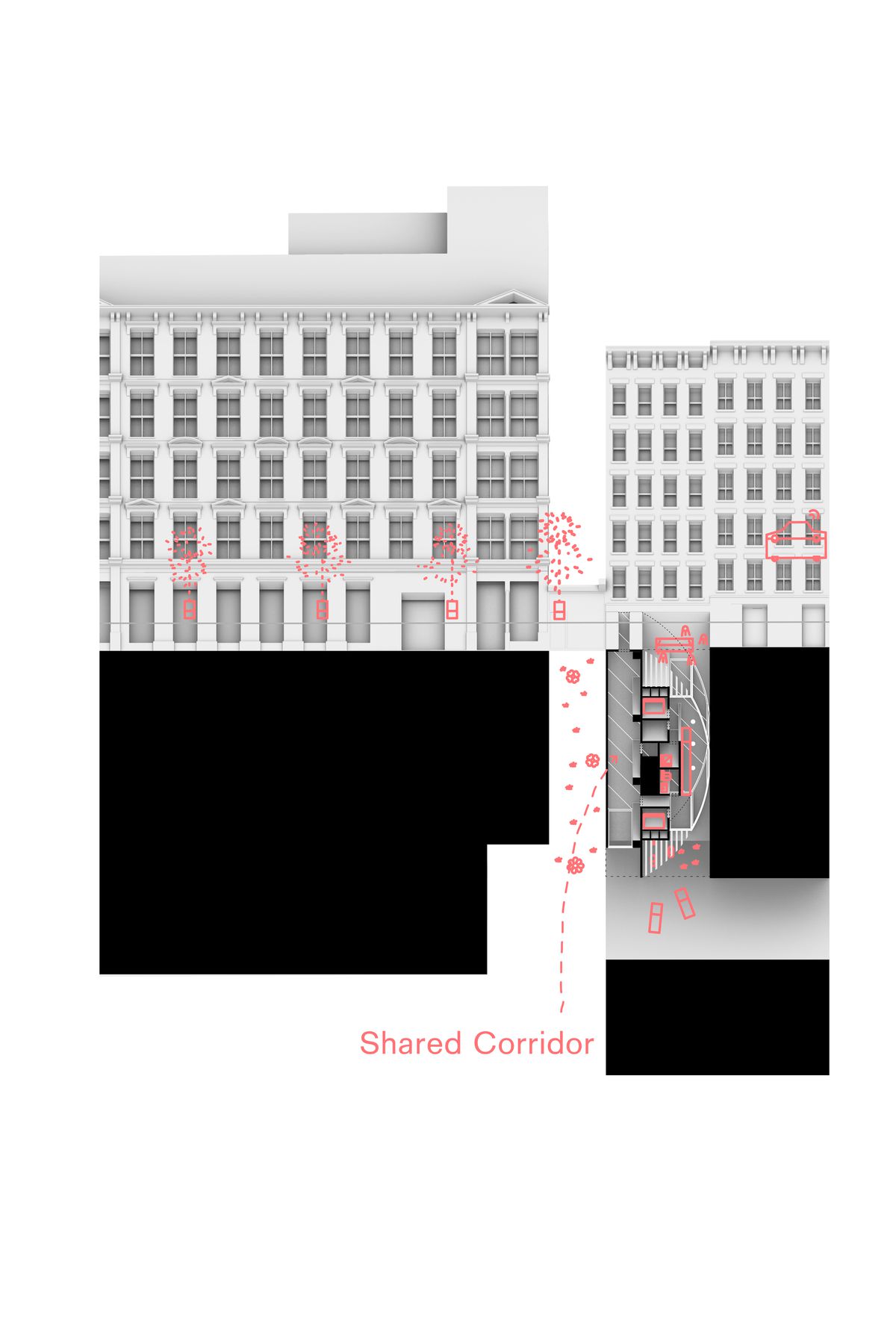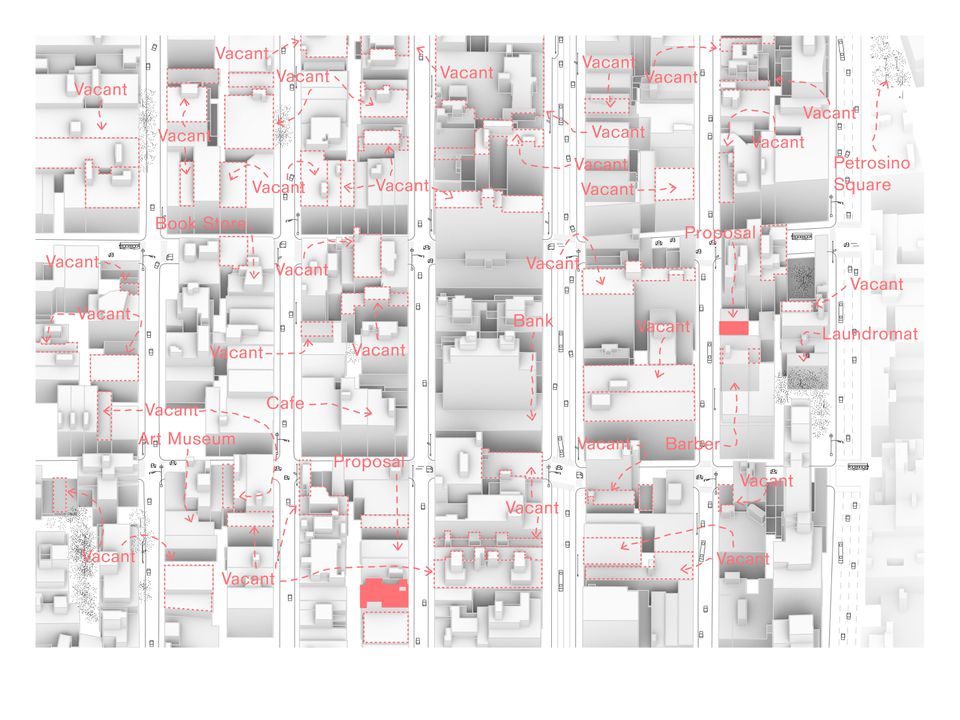Without even trying, retail is civic and political
Hilary Sample interviewed by Jack Self on how architects can respond to the changing urban dynamics of retail
- JS
- When is the architecture of retail? We tend to think of shops as finished interiors or objects. But of course, as soon as the shop is finished, it must be animated, activated, and maintained by vast numbers of people. I am interested in whether the purpose of retail design is to create this image or to create a systems-based approach to how a space might evolve and continue to develop over time.
- HS
- When experiencing a built retail space, perhaps a first reading should concern how it came to be. In other words, what is the set of circumstances around its making? I want to know how that shop came about based on issues around zoning and policy. Being based in New York, I’ve observed how the city has evolved based on a set of laws and policies that were not about retail as it is experienced today, but that still affect the day-to-day exchange of buying and selling goods. I’m thinking about neighbourhoods, specifically neighbourhoods with high-density housing, more than high-traffic commercial districts.
It seems to me that before you can ask “when is the architecture of retail?” it’s important to understand where and when retail even begins to emerge in the city, and how that appears daily. It certainly happens at different scales and with different purposes, which troubles the standard way of thinking about how the city has been organized. In the United States, architects don’t hold this kind of authority or power. - JS
- You mention that architects overall are not responsible for shaping a city in this way. Can you expand on that comment, because those who are not architects are probably not aware of the limitations of our role?
- HS
- Providing an answer to your initial question, when is the architecture of retail, requires thinking more carefully about the organization of the city before retail spaces are present. And that’s largely a role not undertaken by an architect, but by planners, policymakers, lawyers, and the broader legal system. Cities have largely been organized around industries such as heavy manufacturing, or transportation nodes, with living spaces filled in elsewhere. The neighbourhoods where people live have almost been approached as a secondary consideration. Within those neighbourhoods, an additional set of legal and zoning constraints and laws determine where retail spaces can and cannot be located. It is important to distinguish different kinds of retail spaces and for whom they are designed and built: from grocery stores to clinics, to luxury shopping.
Every so often in a neighbourhood, at least in New York City, we have something called a commercial overlay, which refers to the placement of a drawing featuring a variety of patterns in hatched lines over a map to denote where commercial spaces can be built within a residential district. So as architects, we’re inheriting a whole set of pre-decided elements that, for the most part, we have no control over and have not participated in designing. What comes after is a direct response to those policies and laws. Other times, we find ways to reinvent or subvert these processes and to begin to make more public overtures or claims about how we engage in daily life and intervene in retail. This is fundamentally a question about equity and the way that retail shapes neighbourhoods. It’s about having real processes in place that can support change and development at a small scale. Today, those considerations must reflect on how cities transformed during the COVID pandemic, which exposed urban vulnerabilities and led to many more vacancies in commercial spaces than we had seen before.
The images and accompanying captions in this text are excerpted from Michael Meredith and Hilary Sample’s book Vacant Spaces NY, published by Actar, based on research developed by MOS with students from Princeton University’s School of Architecture.
“This project began by walking around our neighbourhood noticing empty storefronts. Once we saw them, they were everywhere. They followed us, appearing quietly throughout New York City. Many with no signage, no ‘for rent,’ no ‘coming soon.’ Usually empty, sometimes dusty, sometimes with brown paper covering the glass. Now, vacancy has only increased. In the densest city in the United States. During a housing crisis. Throughout a pandemic. The quality of vacant spaces is anyone’s best guess. It’s only partially documented. They hide in plain sight.” Image © MOS Architects
- JS
- What is the purpose of retail?
- HS
- The past two, almost three years have upended our expectations of how to define retail, and have further solidified what it needs to be and what it needs to do. It was easy to see that during the pandemic, small-scale neighbourhoods and particularly in the least affluent areas relied much more heavily on local shops and services. This demonstrated the strength of neighbourhoods, but also the strain placed on shop owners and residents. Storefronts are the lifelines of communities, and the rippling impact of the pandemic on retail was made spatially evident by the overcrowding and long lines on the sidewalks due to the mandated 6 feet separation. People waited for hours to get groceries.
Even before the any of these local neighbourhoods received little governmental or financial support; they must fend for themselves in many ways. Yet commercial and high-traffic areas became vacant as big-box shops closed and remain closed. Other kinds of services were vacated rather quickly as well.
Beauty salons and nail shops were shuttered because of the pandemic, and while business owners cleaned out equipment and furniture, the plumbing remained, which was very striking to me. They were empty but when you’d peep in, you could see all the copper piping. That reminded me of the 2008 housing crash in the United States when people were stripping metals from houses and selling them. In New York, these storefronts still stood, and you could see the evidence of a former retail life that no longer existed.
- JS
- Are services more important than products in contemporary retail?
- HS
- The shift of significant shopping experiences to online retail has impacted the city as a whole and has radically changed the experience of being part of a neighbourhood or moving through commercial areas. We now have an opportunity to reimagine what these spaces can be, but unless we radically reimagine and rewrite the laws and codes that govern zoning, the city will continue to be limited by them, the residents will still be limited, and the shop owners will still be limited. Services are critically important.
We must think about the publicness of retail spaces and about that fine line of the glass wall that divides the sidewalk and an interior that is privately owned; likely not owned by the retailer.
Cities have been historically organized around issues of health, and in turn, produce their unique forms of inequity and equity. One of the shifts I’ve recently noticed is that more and more of the spaces that were vacated during the pandemic have transformed to focus on health services or their related forms. Where we once saw coffee shops emerge in artists’ neighborhoods, we’re now seeing more juice bars and athletic retail stores open. To me, this seems like a direct effect of the pandemic.
These retail shifts also speak to the enduring buying potential of a particular economic class—who can afford a 9-dollar glass of juice? Maybe as a society, we’re thinking more carefully about our health in this almost post-pandemic. Meanwhile, poorer neighbourhoods often have more residents with chronic health issues and fewer resources to live healthier lives. We see a repeated pattern in the location of shops in these neighbourhoods, with fast-food restaurants being located immediately next to a pharmacy, for instance. This raises questions about which comes first: poor healthcare or being surrounded by fast-food restaurants. It’s a depressing situation and once you see it as a scaled urban phenomenon, it’s hard to unsee. This phenomenon should sound an alarm as to essential services in neighborhoods versus what is provided.
I keep thinking about Adolf Loos’s text on the plumber and the way he described the invention of the term “installer” for the plumber since they were installing piping—but they were installing something else, a kind of service, bringing water to the bathtub. What happens when we don’t need more of those services—which is what he had been calling for in his text—but rather fewer? We have to be more careful regarding where and when those services are offered, to think in terms of conservation instead of installation, or to think about the installation of things such as communal refrigerators, which are found on sidewalks instead of inside buildings.
- JS
- On the one hand, capitalism and consumerism want to sell you more and more. On the other hand, we live in a time in which we recognize a pressing need to reduce our consumption. What is the most important economic logic that drives retail today? Should we be looking to find new ways to reduce consumption through retail?
- HS
- I think the challenge of reducing the consumption and production of things affords a new openness to the way we work and design. I think constraints are useful as a designer. By reducing some things, maybe other options come about that we hadn’t thought of before.
You don’t know how a space will work when you’ve designed it. You can’t predict everything. There’s a very nice text by Álvaro Siza called “Viver uma casa,” Living a Home. He describes how he has designed all of these houses, but he hasn’t designed the way they are lived in. He can’t predict how someone may smoke a cigarette somewhere in the space, or how someone is going to cook their meal. As a designer, we’re limited from the get-go. We can’t predict everything. We can’t design every single movement or exchange in a space. So the designer might engage critically in thinking about how retail could be more open to difference, moving away from its conception as a fixed typology.
- JS
- In your work, you often design both the object and its framework. Traditionally, you might say that you’re assuming a very large role in the creation of the brief. But to what extent should designers develop systems and the context for things, as much as designing the objects? Should architects be designing retail space, or should we just be designing rules for retail experiences?
- HS
- Maybe neither? I would hope that our work could accommodate both. It’s important to understand where we’re working and for whom we’re working. Architecture often has been considered, particularly in connection to the realm of retail and through OMA’s work with fashion brands, in terms of luxury, which comes with a certain set of requirements and budgets, and expectations. When you think of design in terms of the small-scale neighbourhood, a different set of constraints emerges. And yet all those spaces are organized around and determined by set laws, codes, and policies that are deeply flawed.
I think it’s important that, as architects, we understand the contexts in which we’re intervening. It goes back to your earlier question about the idea of architects serving the public. And I think that it’s important, particularly today, to pick up the conversation about how architects serve the public. Because retail has been seen, by and large, as an exclusive domain, as has architectural design.
“We look at these immense retail vacancies as akin to the loft spaces left as Lower Manhattan deindustrialized in the late 1950s and early ‘60s. During this time, light manufacturing such as plastic warehouses, paper recycling facilities, and garment factories, moved from SoHo out of the city or went out of business entirely. Manufacturing changed. Vacant lofts transformed into inexpensive live-work spaces. Still zoned for industrial use, these loft apartments were illegal at first. But community groups formed quickly and fought successfully for policy changes. Sometimes solutions to problems are already here, around us, if we rethink our assumptions, if we imagine other possibilities, and if we organize.” Image © MOS Architects
- JS
- Are retail spaces civic and political spaces? Do they present opportunities for shaping the public realm? What are the obligations of the architect to these ends?
- HS
- Fundamentally, through the way that retail spaces appear in cities and neighbourhoods. There are processes that architects can engage in, but changing the codes or laws that dictate the size of retail spaces is not things that are going to be initiated by the architect. The architect is not paying for those spaces.
There are limitations to the role of the architect in the US. But armed with the knowledge of how a city is made and governed, an architect can certainly discuss restrictions and possibilities with a retail client. It is possible to reimagine the way retail spaces work through understanding, in the first place, the frameworks that determine why and where a retail space even exists in the city, and at what scale. The demand for retail spaces has shaped and reshaped cities. A consideration of how these spaces exist is integral to a broader perspective on housing issues, for example by thinking about those who live above shops, or caretakers’ apartments within commercial or manufacturing zones—these retail spaces directly create civic spaces. Without even trying, retail is civic and political.
